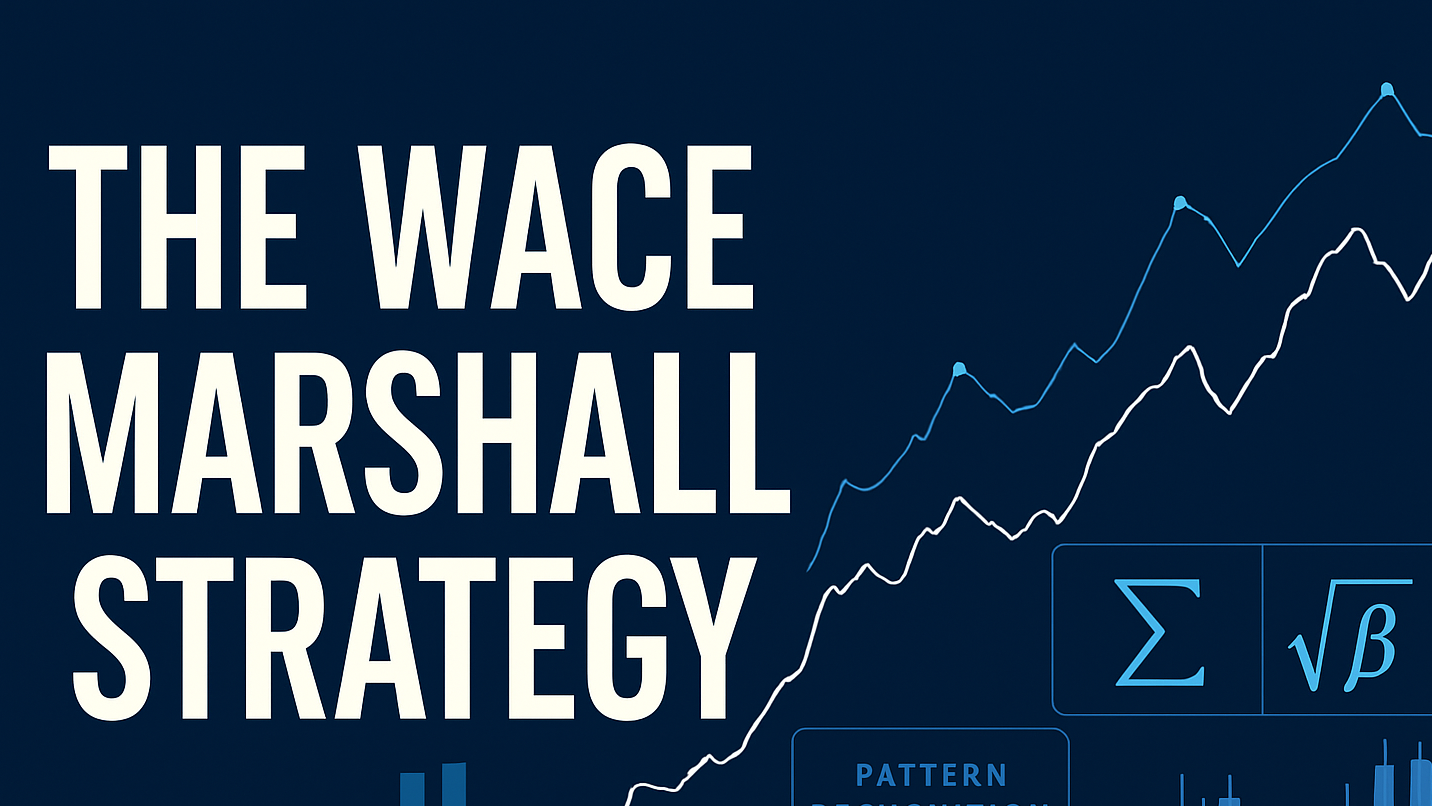Explore lessons from a legendary trading strategy that reveals how to identify market inefficiencies and manage risk effectively.
How did John Paulson make $15 billion in 2007? By betting against the housing market before the 2008 financial crisis. His strategy combined deep market analysis, identifying inefficiencies, and using credit-default swaps (CDS) to profit from the sub-prime mortgage collapse. Here’s a quick breakdown of his approach and lessons you can apply today:
- Spotting Market Gaps: Paulson noticed risky lending practices and slowing housing-price growth, signaling a bubble.
- Using Data & Tools: He relied on credit-default swaps to bet against overvalued assets tied to sub-prime mortgages.
- Risk Management: Strict position sizing and stop-loss strategies helped control risks in volatile markets.
- Modern Applications: Today, traders can combine fundamental analysis, technical tools, and AI-driven backtesting to find similar opportunities in overvalued sectors.
Paulson’s success proves that thorough research, disciplined execution, and understanding market inefficiencies can lead to extraordinary results in any era.
Finding Market Gaps and Price Mismatches
Reading Macro Trends to Spot Overvalued Assets
Market inefficiencies often arise when asset prices deviate significantly from their intrinsic value. Warren Buffett summed it up well:
“I’m convinced that there is much inefficiency in the market, market prices are frequently nonsensical”.
This observation aligns with Paulson’s method of identifying the housing bubble before it burst. To uncover overvalued assets, focus on three main areas: fundamental analysis, relative valuation, and economic indicators. For instance, examine financial statements and compare valuation metrics like price-to-earnings (P/E) and enterprise value to EBITDA (EV/EBITDA) across similar companies.
Here are some key financial ratios that may hint at overvaluation:
| Ratio Type | Warning Signs | What It Means |
|---|---|---|
| P/E Ratio | Far above the industry average | The asset might be overpriced |
| Debt-to-Equity | Rapid increases | Signals growing financial risk |
| Interest Coverage | Consistent declines | Indicates weakening ability to repay debt |
These metrics provide a solid foundation for identifying potential mispricings, which can then be validated with technical analysis.
Technical Tools to Confirm Market Divergence
Beyond fundamental analysis, technical signals can help confirm market mispricing. Divergences between price movements and technical indicators often reveal these inefficiencies. These divergences typically fall into two categories:
| Divergence Type | Price Action | Indicator Behavior | Trading Implication |
|---|---|---|---|
| Regular Bearish | Higher Highs | Lower Highs | Suggests a possible downtrend |
| Regular Bullish | Lower Lows | Higher Lows | Suggests a possible uptrend |
LuxAlgo’s free Library on TradingView offers several indicators that simplify this process. For instance, traders often validate divergences with the Ultimate RSI, visualize hidden liquidity using Volume Profile Maps or the grid-based Volume Profile Matrix, and highlight strength rotations through the Relative Strength Scatter Plot. Momentum shifts become even clearer with the RSI Candlestick Oscillator, while Volume Profile with Node Detection flags high-volume nodes that often precede sharp reversals.
CDO Short Strategy: Modern Applications
When both fundamental and technical analyses align, they can reveal strong contrarian opportunities. Paulson’s confidence during the housing bubble is a case in point:
“No one wanted to listen, but we knew we were right”.
Today, traders can identify similar opportunities by focusing on factors like high short interest, fragile market structures, deviations from fundamental value, and excessive leverage.
For example, in early 2025, rising interest rates and inflated small-cap growth-stock valuations exposed clear signs of overvaluation, a scenario reminiscent of Paulson’s warnings.
While contrarian strategies can deliver significant gains, they require careful analysis and precise timing. Monitoring market-sentiment indicators, such as extreme levels of fear or greed, can provide valuable clues about when to act.
Merging Market Data with Price Analysis
Financial Statement Analysis for Trades
Blending fundamental data with technical signals can streamline trading decisions. Start by analyzing financial statements and honing in on key metrics like debt levels, interest coverage, and operating margins to assess a company’s financial stability. Spotting red flags, such as rising debt or shrinking operating margins, can signal potential issues. Pair these observations with technical indicators, such as moving averages or trading volume, to reinforce your analysis. This combination lays the groundwork for pinpointing price patterns that validate your trade signals.
Matching Price Patterns with Indicators
Combining fundamental analysis with technical tools often leads to clearer trade signals. Take this example: a strong consumer price index (CPI) report in Australia, paired with a dovish stance from the Reserve Bank of New Zealand, set the stage for the Australian dollar to gain traction. Traders supported this fundamental insight by identifying technical patterns like symmetrical triangles, daily pivot points, and inside-bar formations. To ensure reliability, run these combined strategies through rigorous backtesting to evaluate their effectiveness in different market conditions.
Testing Combined Analysis Methods
Before putting capital at risk, thoroughly test any strategy that merges fundamental and technical analysis. For instance, backtesting a 3-day RSI strategy on the Nasdaq 100 (QQQ) revealed an average gain of 1.26% per trade, a win rate of 72%, a maximum drawdown of 19%, and annual returns of 10.8%, all while being active just 12.8% of the time. Expand your testing across various market cycles, enforce strict risk management (like careful position sizing), and factor in transaction costs, including slippage and fees, to ensure the strategy holds up in real-world trading.
John Paulson Tells the Story of Wall Street’s “Greatest Trade”
Risk Control for Large Market Positions
John Paulson’s 2008 trades highlight the importance of maintaining strict risk control when managing large market positions. His disciplined approach offers valuable insights for handling current market exposures effectively.
Position Sizing: Balancing Risk and Reward
When determining position sizes, consider your risk tolerance carefully, it’s generally recommended not to risk more than 2% of your capital per trade. Here’s an example of how this approach works based on account size:
| Account Size | Max Risk Per Trade (2%) | Position Size at 10% Stop |
|---|---|---|
| $25,000 | $500 | $5,000 |
| $50,000 | $1,000 | $10,000 |
| $100,000 | $2,000 | $20,000 |
For instance, if you hold a $10,000 position and notice heightened volatility through a high Average True Range (ATR), reducing the position to $7,500 can help mitigate risk.
Effective Stop-Loss Strategies
Placing stop-losses strategically is crucial for managing risk. Align your stop-loss levels with technical indicators and volatility metrics. Research suggests that trailing stop-losses between 15-20% tend to perform well over time. For example, using a 10% stop-loss strategy has been shown to reduce maximum monthly losses from -49.79% to -11.34%.
Adjust your stop-loss distances based on your trading timeframe:
| Trading Timeframe | Recommended Stop Distance |
|---|---|
| Hourly Charts | 30-50 pips |
| 4-Hour Charts | 50-100 pips |
| Daily Charts | 100-200 pips |
Incorporating these stop-loss techniques into your portfolio, along with regular stress tests, can significantly strengthen your overall risk-management framework.
Portfolio Risk Testing
Beyond individual trades, it’s essential to evaluate your entire portfolio’s risk. Conduct detailed stress tests to prepare for various market scenarios. For example, monitoring your portfolio’s beta coefficient can reveal how it reacts to market movements. As of October 2024, Amazon (AMZN) had a beta of 1.15, indicating slightly higher volatility compared to the market average.
Some key methods for portfolio-risk testing include:
- Value at Risk (VaR) Analysis: Estimate potential losses at different confidence levels to ensure position sizes align with your risk tolerance.
- Correlation Testing: Analyze how your positions interact during market stress. Adding counter-cyclical assets can enhance portfolio stability.
- Performance Reviews: Regularly compare your quarterly returns against benchmarks using metrics like the Sharpe ratio. A Sharpe ratio above one suggests a better balance between risk and reward.
Creating a Numbers-Based Trading System
John Paulson’s strategy during the 2008 financial crisis serves as a great example of how a systematic, numbers-driven trading approach can lead to success. By combining thorough analysis with disciplined execution, traders can create a structured framework for decision-making.
Clear Trade Entry and Exit Rules
A solid trading system starts with well-defined entry and exit rules. Here’s how you can align different confirmation signals into a cohesive strategy:
| Component | Entry Criteria | Exit Criteria |
|---|---|---|
| Trend Direction | Price above 200-day moving average | Price below 200-day moving average |
| Price Action | Break of resistance | Break of support |
| Volume Confirmation | Volume 150% above average | Volume 50% below average |
| Risk Parameters | Risk capped at 2% per trade | Minimum reward-to-risk ratio of 1.5:1 |
These rules not only provide clarity but also help manage risk and maintain consistency in decision-making. Setting precise price targets further enhances control over trades.
Calculating Price Targets
Price targets should be determined using a mix of technical analysis and risk considerations. Here’s how to approach it:
- Technical Price Targets
If a stock is trading at $60 with an earnings per share (EPS) of $3 and its industry P/E ratio is 19, and you expect EPS growth of 5% (to $3.15), the price target would be:
19 × $3.15 = $59.85. - Risk-Adjusted Targets
Historical data and technical levels can help refine targets. Adjust these targets to account for market volatility and ensure they align with your risk tolerance.
Monthly Trade-Performance Review
Regularly reviewing performance is essential to improving your trading system. Focus on these key metrics each month:
| Performance Metric | Target Range | Purpose |
|---|---|---|
| Win Rate | 50-65% | Measures how often trades succeed |
| Profit Factor | >1.5 | Evaluates the balance of risk and reward |
| Maximum Drawdown | <20% | Assesses the system’s risk control |
| Average Win/Loss | >1.5:1 | Confirms effective position sizing |
Beyond metrics, evaluate each trade by scoring factors like timing of entry, stop-loss placement, position sizing, exit execution, and adherence to your trading plan.
Additionally, analyze your top five winners and worst five losers each month. This practice can uncover patterns in your trades, helping you refine your rules and improve overall performance. By consistently reviewing and adjusting your approach, you can build a trading system that grows stronger over time.
Conclusion: Modern Uses of Paulson’s Methods
John Paulson’s legendary $15 billion profit during the 2007-2008 financial crisis demonstrates that systematic trading, when paired with modern technology, continues to stand the test of time. The integration of advanced tools has seamlessly connected Paulson’s original strategies with today’s fast-paced trading environment.
The rise of cutting-edge trading technology has not only simplified the application of Paulson’s methods but also made them more efficient. Traders now have access to sophisticated tools that enhance strategy execution while balancing risk and opportunity:
| Strategy Component | Traditional Approach | Modern Implementation |
|---|---|---|
| Market Analysis | Manual research | AI-driven trend analysis |
| Risk Management | Basic position sizing | Sophisticated portfolio controls |
| Trade Execution | Manual entry/exit | Automated stop-loss orders |
| Performance Tracking | Paper records | Real-time data analytics |
This modernized approach refines market analysis and strengthens risk management, echoing Paulson’s disciplined methodology. To succeed in today’s trading landscape, the following elements remain critical:
- Portfolio Diversification: Spreading investments across different sectors to reduce risk.
- Position Sizing: Scaling investments based on risk tolerance.
- Exit Strategy: Using automated stop-loss orders to protect gains and limit losses.
- Performance Analytics: Leveraging real-time insights to refine strategies.
While artificial intelligence and machine learning now play a significant role in trading, the core idea remains unchanged: uncovering market inefficiencies through systematic analysis. By combining these timeless principles with the power of modern technology, like advanced analytics, AI Backtesting, and automated tools, traders can craft strategies that thrive in today’s unpredictable markets.
FAQs
How can traders use John Paulson’s strategies to spot overvalued sectors in today’s market?
Traders looking to follow John Paulson’s approach should focus on spotting market inefficiencies through detailed analysis, just as he did during the 2008 financial crisis. His success came from blending fundamental analysis, like examining valuation metrics such as the P/E and P/B ratios, with a strong grasp of market trends.
To adapt these strategies in today’s market, consider the following:
- Evaluate valuation metrics: Compare a stock’s P/E or P/B ratios against its historical averages or industry benchmarks to pinpoint potential overpricing.
- Watch economic and insider signals: Keep an eye on key economic indicators and insider trading activity, as these can highlight mispricing within certain sectors.
- Think like a contrarian: Challenge the dominant market sentiment and explore opportunities others might miss.
By combining these techniques, traders can navigate market volatility with greater confidence and identify sectors that may be overvalued.
What are the most effective technical indicators for spotting market mispricing?
Traders often turn to technical indicators like the Relative Strength Index (RSI), Moving Average Convergence Divergence (MACD), Bollinger Bands, and moving averages to spot potential mispricing in the market. These tools are essential for assessing market momentum, identifying trends, and understanding price volatility.
Take RSI and oscillators, for instance, they’re great for detecting overbought or oversold conditions, which can hint at upcoming price corrections. Bollinger Bands and moving averages are useful for analyzing price trends and deviations, offering clues about possible market inefficiencies. Combining these indicators can sharpen decision-making and help you uncover opportunities in unpredictable market conditions.
What are the best strategies for managing risk and position sizing during volatile markets like the 2008 financial crisis?
Managing risk and determining position sizes in volatile markets calls for a thoughtful and disciplined strategy. One effective approach is to scale down your position sizes when market volatility spikes. This can help limit potential losses and safeguard your capital, ensuring you’re not overexposed during unpredictable periods.
Another key tactic is to use stop-loss orders. These can act as a safety net, automatically exiting positions before losses grow too large. Diversification is equally important, it helps spread risk across various assets, reducing the impact of any single market event. These principles echo the strategies employed by John Paulson during the 2008 financial crisis, highlighting the value of thorough analysis and staying flexible in turbulent times.
By maintaining discipline and adapting to shifting market conditions, you can navigate volatility more effectively and protect your portfolio from unnecessary risks.
References
- Market Sentiment Technicals
- Pivot Point Profile
- Risking It Right Blog Post
- Range Average Retest Model
- Best Timeframe Blog Post
- Machine Learning Regression Trend
- Donchian MA Bands
- RSI Blog Post
- AI Backtesting Assistant
- Ultimate RSI
- Volume Profile Maps
- Relative Strength Scatter Plot
- Volume Profile Matrix
- RSI Candlestick Oscillator
- Volume Profile with Node Detection
- Reserve Bank of New Zealand
- Nasdaq 100
- Invesco QQQ
- Amazon Investor Relations








